Related Research Articles

Grant DeVolson Wood was an American painter and representative of Regionalism, best known for his paintings depicting the rural American Midwest. He is particularly well known for American Gothic (1930), which has become an iconic example of early 20th-century American art.

John La Farge was an American artist whose career spanned illustration, murals, interior design, painting, and popular books on his Asian travels and other art-related topics.
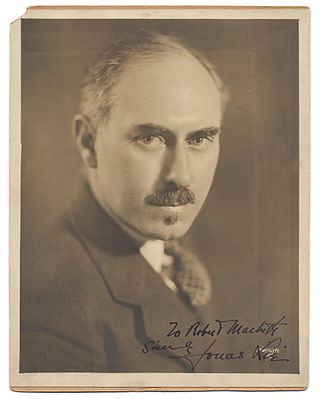
Jonas Lie was a Norwegian-born American painter and teacher.

William Trost Richards was an American landscape artist. He was associated with both the Hudson River School and the American Pre-Raphaelite movement.

The Everson Museum of Art in Downtown Syracuse, New York is a major Central New York museum focusing on American art.

Stephen J. Powers is an American contemporary artist and muralist. He is also known by the name ESPO, and Steve Powers. He lives in New York City.

Gifford Beal was an American painter, watercolorist, printmaker and muralist.
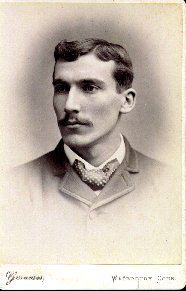
Henry Golden Dearth was a distinguished American painter who studied in Paris and continued to spend his summers in France painting in the Normandy region. He would return to New York in winter, and became known for his moody paintings of the Long Island area. Around 1912, Dearth changed his artistic style, and began to include portrait and still life pieces as well as his paintings of rock pools created mainly in Brittany. A winner of several career medals and the Webb prize in 1893, Dearth died suddenly in 1918 aged 53 and was survived by a wife and daughter.
Richard Paul Lohse was a Swiss painter and graphic artist and one of the main representatives of the concrete and constructive art movements.
William Arthur Smith was an American artist.
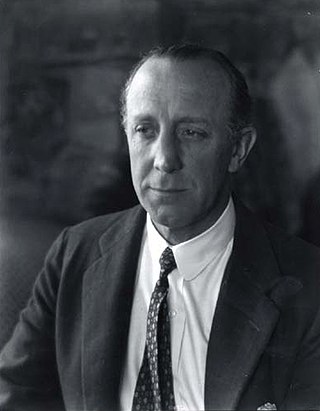
Paul Hampden Dougherty was an American marine painter. Dougherty was recognized for his American Impressionism paintings of the coasts of Maine and Cornwall in the years after the turn of the 20th century. His work has been described as bold and masculine, and he was best known for his many paintings of breakers crashing against rocky coasts and mountain landscapes. Dougherty also painted still lifes, created prints and sculpted.
Arthur Watkins Crisp was a Canadian painter, muralist, and designer.
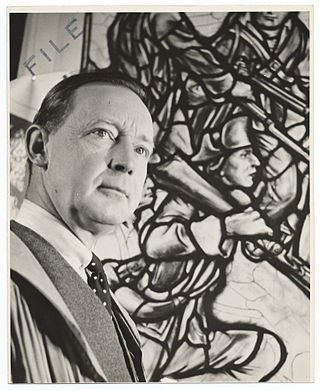
George Pearse Ennis was an American artist. He is known for his watercolors and for the stained glass window he designed for Washington Hall, the cadet mess hall at West Point.

Raoul Middleman was an American painter known for his "provocatively prolific work--primarily traditional, including figure studies, landscapes, and still lifes--and for being a megawatt personality." Middleman was a member of the Maryland Institute College of Art faculty from 1961 on. In a 2009 Baltimore City Paper article Bret McCabe described Middleman's paintings as featuring "... expressive strokes, a tight control over an earthy palette, a romantic tone slightly offset by a penetrating eye —becomes distinctive even if you haven’t seen them before, so strongly does he articulate his old-fashioned sensibility in his works.”
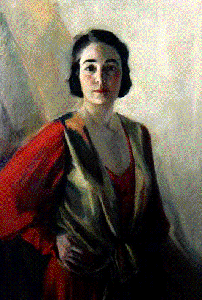
Sue May Gailey Wescott Gill was an American artist and member of the Philadelphia Ten.

Karl Knaths was an American artist whose personal approach to the Cubist aesthetic led him to create paintings which, while abstract, contained readily identifiable subjects. In addition to the Cubist painters, his work shows influence by Paul Cézanne, Wassily Kandinsky, Utagawa Kuniyoshi, Paul Klee, Stuart Davis, and Agnes Weinrich. It is nonetheless, in use of heavy line, rendering of depth, disciplined treatment of color, and architecture of planes, distinctly his own.
J. Theodore Johnson was an American artist and muralist. He was born in Oregon, Illinois, in 1902 and studied at the Art Institute of Chicago from 1921 to 1925. He became an artist and instructor in life drawing at the institute from 1928 to 1929. He also taught at the Minneapolis School of Art and the San José College in California. He died in Sunnyvale, California, in 1963.
Susan Brown Chase (1868–1948) was an American painter.

Ferol Katherine Sibley Warthen, also known as Mrs. Lee R. Warthen, was an American painter and printmaker.

James Duard Marshall was a painter, lithographer, museum director, and art conservator who lived most of his life in Kansas City. Duard [pronounced "doo-erd"] was a student of Thomas Hart Benton and is best known for his 30-foot mural created for the centennial of Neosho, Missouri in 1939. The civic leaders of Neosho had approached Benton to produce the mural, as Benton had been born in Neosho, but he suggested that his student Marshall do the job. That mural hangs in the Neosho Newton County Library.
References
- ↑ Paul Ludwig Gill Penn State University
- ↑ Cairo, GA New Deal Art Archived 2016-03-05 at the Wayback Machine WPA Murals
- ↑ Sue May Gailey Wescott Gill-Artist (1887-1989), Wes Loder. Accessed April 29, 2015. "GG and Paul bought their own little cottage in Harvey Cedars just one house from the beach and from the mid-Twenties on spent much of their non-traveling time in the summers there."
- 1 2 George Pearse Ennis and Paul Ludwig Gill Memorial Exhibition of Water Colors Brooklyn Museum
- ↑ Paul Ludwig Gill Metropolitan Museum of Art